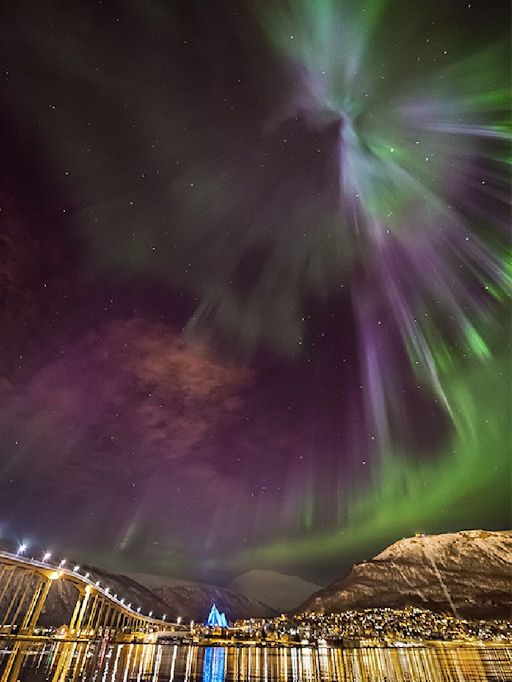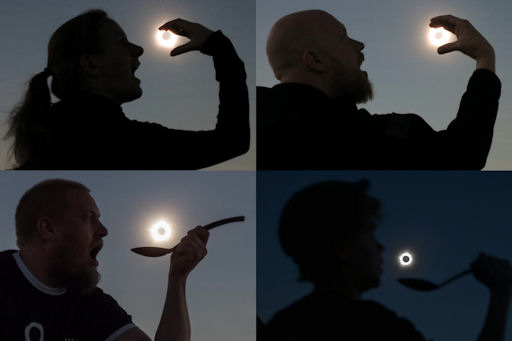Metallic photos of the sun by renowned photographer Greg Piepol bring together the best of art and science. Buy one or a whole set. They make a stellar gift. | | |
SUBSIDING STORM: Last night, Nov. 13/14, Northern Lights spilled across the Canadian border into the United States during a moderately strong (Kp=6) geomagnetic storm. Spotters report naked-eye auroras over Minnesota, Michigan, the Dakotas, Wisconsin, Vermont, Connecticut and, just barely, Colorado and Kansas. The storm, which is subsiding now, flared up as Earth passed through the wake of a CME that swept past our planet on Nov. 13th. Aurora alerts: text, voice.
Satellite data show that some of the intense auroral bands were located over Northern Europe. Photographer Ole C. Salomonsen sends this picture from Tromsø, Norway:

"Tonight was a spectacular night," says Salomonsen. "This for sure was the strongest auroras so far this season. The magnetograms at the University of Tromsø went bananas! Tromsø is a city of about 70,000, so it has a lot of light pollution; even so, the auroras were clearly visible standing in the middle of the city. It was just sick!"
"Once a year the Arctic cathedral in Tromsø is lit in blue to put focus on diabetes. This was the first night it was lit blue this year, and man was I lucky to get one of the strongest outbreaks I have ever seen just above it. This was just a mindblowing visual and astronomical experience. I came home with almost 500GB of photos."
More auroras could be in tthe offing. NOAA forecasters estimate a 25% chance of strong geomagnetic storms during the next 24 hours. Aurora alerts: text, voice.
Realtime Aurora Photo Gallery
SOLAR ECLIPSE FOR BREAKFAST: What do you do when the Moon covers the sun just after sunrise? Have a solar eclipse for breakfast! Janne Pyykkö sends these pictures of people "eating" yesterday's sunrise total eclipse over Queensland, Australia:

Credits: from top-left to bottom-right are Saul Lehtonen (model Johanna Hoffrén), Johanna Hoffrén (model Saul Lehtonen), Ville Nikula (model Mikael Holappa), Anna Snellman (model Otto Snellman).
"Our Finnish team of 45 eclipse chasers watched the total solar eclipse from the dry desert 150 km north-west of Cairns, Australia," explains Pyykkö. "I organized a project to catch photos where people are eating the total solar eclipse; there was no strict guidance about the choice of camera or overall arrangements. Quite a few of us took the challenge. Here is a behind-the-scenes shot that describes the idea."
Browse the photo gallery for more images:
Realtime Eclipse Photo Gallery
Realtime Space Weather Photo Gallery
Realtime Noctilucent Cloud Photo Gallery
[previous years: 2003, 2004, 2005, 2006, 2007, 2008, 2009, 2011]

